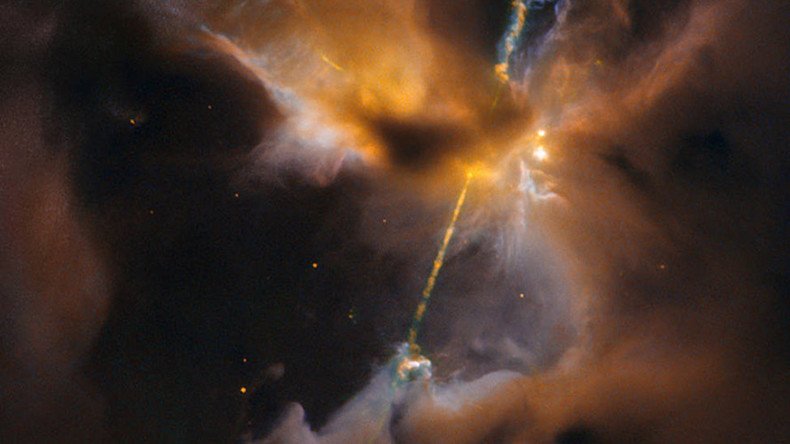‘Double-bladed lightsaber’ captured in image of adolescent star by NASA

A young star bursting with dual beams of plasma offered not only phenomenal images, but plenty of groan-worthy Star Wars puns as well. NASA called it a “cosmic lightsaber,” attracting more attention to the stellar scene.
“Just in time for the release of the movie Star Wars Episode VII: The Force Awakens, NASA’s Hubble Space Telescope has photographed what looks like a cosmic, double-bladed lightsaber,” NASA commented in their blog in describing the photo, which was taken with infrared light.
New #Hubble pic shows a cosmic lightsaber, the preferred weapon of a Jedi Knight. #StarWars
https://t.co/8PhjNdofDxpic.twitter.com/1YBc8cNqN3
— Hubble (@NASA_Hubble) December 17, 2015What’s actually happening in the photo is that a protostar’s gravity (or its “Jabba-like appetite,” to NASA) is shaping the material surrounding it into the form of a flat disk. Then gas from the disk is pulled inwards until it explodes through the protostar’s opposite polar ends, creating “cellestial lightsabers,” as NASA puts it.
This isn’t going on in a galaxy far, far away. Rather, the astonishing sight is to be found right here at home in the Milky Way galaxy, a mere 1,350 light-years from Earth. The protostar is in the Orion B molecular cloud complex, which obscures some of the picture with what NASA called a “dark, Jedi-like cloak of dust.”
The Force awakens: Sales of Star Wars porn 'skyrocket' by 500% https://t.co/GQwNzXo9HRpic.twitter.com/28CdTM2VAk
— RT America (@RT_America) December 17, 2015As the lightsaber-esque plasma jets travel at hypersonic speed, nearby matter becomes curved and knotted up, forming what we see as beams and what astronomers call Herbig-Haro objects. This one has been named R2D2. No, just kidding… It’s been designated as HH 24.
“Their effect on their environment demonstrates the true power of the Dark Side with a blast stronger than one from a fully armed and operational Death Star battle station,” NASA wrote.












